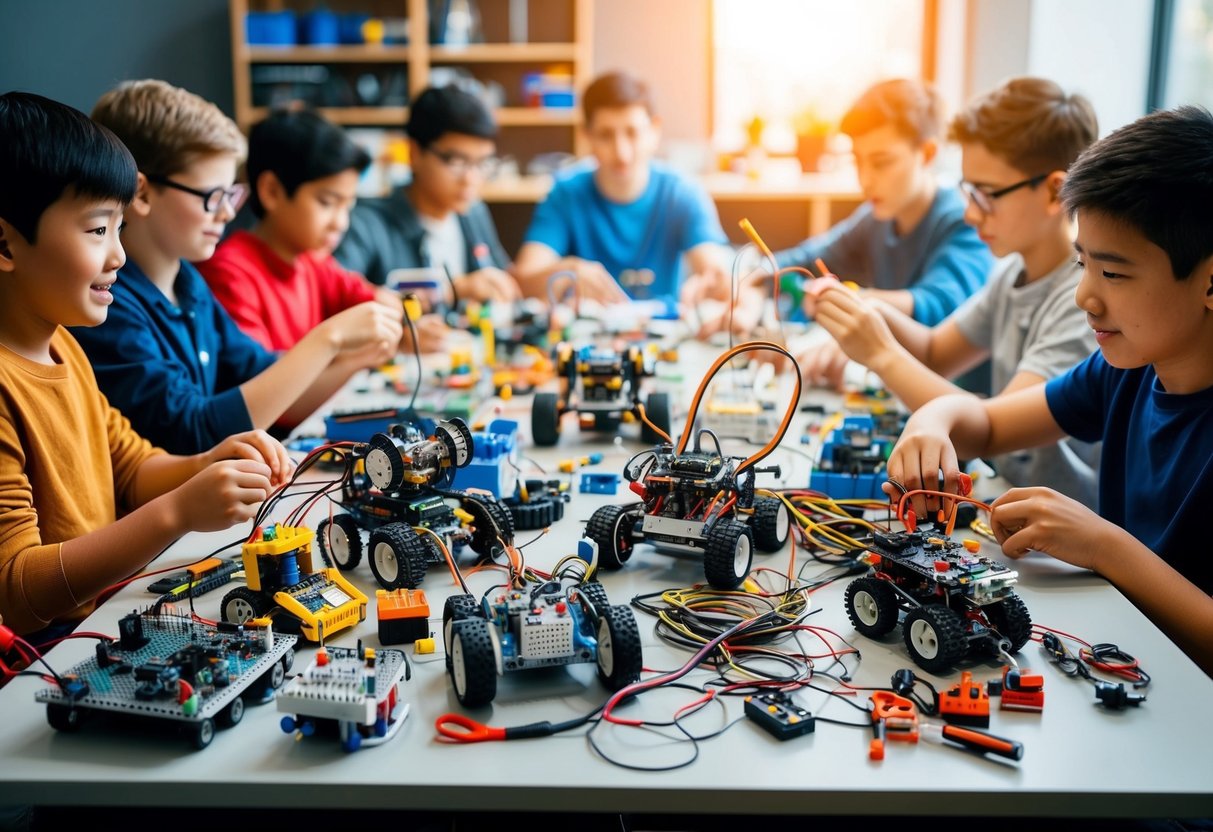Top DIY Robotics Kits for All Ages: Build, Program, and Innovate
Understanding the Basics of Robot Building
Understanding key principles of robot building aids in maximizing the potential of any kit. Most kits include fundamental components like motors, sensors, and microcontrollers. These elements function as the backbone of the robot and understanding their role is crucial. Familiarizing with these parts and their assembly can lead to a successful build.
Programming plays a pivotal role, especially in advanced kits. Comprehension of basic coding concepts allows individuals to customize robot actions and functions. Resources like guides or online courses can support beginners in navigating these technical aspects. Encouraging an iterative approach, where users learn through trial and error, can significantly deepen their grasp of robotics.
Programming Your First Robot
Starting the journey of programming a robot combines creativity and technical skills. Understanding the difference between block-based and text-based programming and choosing the right language like Scratch or Arduino IDE is crucial in crafting a successful robotic experience.
Block-Based vs Text-Based Programming
Block-based programming offers a visual approach, ideal for beginners. This method uses blocks to represent code snippets, making it intuitive for users who are new to programming. Tools like Scratch allow users to drag and drop blocks to create their programs, encouraging experimentation without the complexity of syntax errors.
Text-based programming provides more control and flexibility. While it can seem daunting initially, it’s essential for more advanced projects. Languages like Python offer a deeper understanding of coding logic, enabling users to create more sophisticated and customized programs. Transitioning from block-based to text-based coding is a valuable step in expanding one’s programming skills.
Choosing a Programming Language: Scratch, Arduino IDE, and Beyond
Scratch is an excellent starting point for young programmers. Its block-based interface is user-friendly, helping beginners understand basic coding concepts without the need for complex syntax.
For those advancing to more intricate projects, Arduino IDE provides the opportunity to engage in text-based programming. It’s used widely for building interactive devices. The simplicity of its language makes it accessible while allowing more complex projects to be undertaken.
Exploring other languages like Python offers additional flexibility and opportunities. Each programming environment has its strengths, and selecting the right one depends on the user’s goals and experience level. Choosing a language that aligns with interests and project requirements will enhance the programming experience when building and innovating with robotics.
The Best Robotics Kits in the Market

Leading robotics kits offer a range of features to satisfy every age and skill level. From the simplicity of the Makeblock mBot to the inventive Jimu Robot kits and the creative possibilities of Lego robotics, there are options to fuel enthusiasm for electronics and science.
Makeblock mBot: An Ideal Start for Beginners
The Makeblock mBot stands out as a user-friendly robotics kit, tailor-made for beginners navigating the world of robotics. Featuring a straightforward assembly process, it combines elements of electronics and programming. Users can program their mBot with Scratch, a child-friendly coding language.
Priced reasonably, the kit includes various components, such as sensors and motors, to spur interest in STEM fields. Its LEGO-compatible design allows for further customization and innovation. The mBot app broadens the learning experience by offering interactive robotic games. This makes it an excellent choice for beginners eager to explore the robotics landscape without feeling overwhelmed by complexity.



